
Yogurt is a cultured dairy product known for its ability to promote healthy digestion due to its live active cultures. It can be tolerated by some people with lactose allergies and is a substitute for many dairy products in both cooking and baking. You can substitute yogurt for milk in yeast breads, quick breads and sourdough starter breads.
Yeast Bread
Breads made with yogurt instead of milk will have a sour tang similar to that of sourdough bread. when substituting yogurt, you can thin it with water to get a milk-like consistency or keep it as is and use a bit less flour than called for in your recipe. Warm the yogurt first before combining it with the yeast, being careful not to exceed 105 degrees Fahrenheit. This will help the activity of the yeast cultures, encouraging the bubbles needed to rise your bread.
Quick Bread
Yogurt substituted for milk in quick breads adds flavor and moistness. Because of the sugar in quick bread, the tartness of the yogurt is masked. When substituting for the milk in your quick bread recipe, replace the yogurt cup-for-cup by subtracting 1 teaspoon of baking powder and adding ½ teaspoon of baking soda.
Sourdough
Sourdough breads are made with a starter that serves as a yeast substitute to leaven the bread. The University of Idaho Extension Service recommends making sourdough starters with yogurt instead of milk because the lactic acid bacteria (good-for-you bacteria) in the yogurt helps prevent the growth of harmful bacteria during fermentation. Using yogurt instead of milk when making sourdough bread will also encourage the bread to rise, although it may result in a loaf with more tang.
Choosing
Yogurt is available sweetened or unsweetened, and those labeled as “light” contain artificial sweeteners to reduce the number of calories. When substituting yogurt for milk in bread recipes, choosing the unsweetened variety will eliminate the need to adjust the amount of sugar called for in your recipe. The decision of whether to use nonfat, lowfat, or yogurt made from whole milk is up to you, because small amounts of butterfat added to bread have no negative effects.
Related Articles

How Many Calories in Gluten-Free Bread?

How to Soften Overly Hard Bread

Does It Matter if I Substitute Baking ...

How to Make Bread Chewy
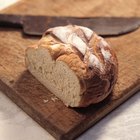
Does Heat Kill Lactobacillus Bacteria ...

Can Fast Acting Yeast Be Used in Place ...
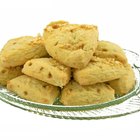
What Is the Difference Between Scones & ...

How to Make Toasted Bread Sticks With ...

How Long Does Banana Bread Stay Fresh?

Can I Substitute Bleached for ...

Substitute for Sorghum in Gingerbread
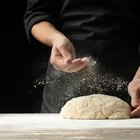
How to Increase the Yeast Taste in Bread
How to Make Bread That Does Not Crumble ...
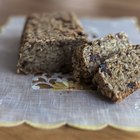
Gluten-Free Bread Without Eggs

How to Make Scones

How to Replace Vegetable Oil for Baking ...

How to Bake Bread in a Clay Pot
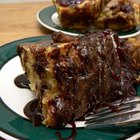
The History of Bread Pudding

How to Make Almond Buttercream Frosting

How to Freeze Brioche
References
Resources
Writer Bio
For more than 10 years, Carol Butler has run a small, off-grid furniture business with her husband and is a regular contributor to the Edible community of magazines. As staff writer for RichLife Advisors, she covers financial planning and other industry-related topics. She holds a B.F.A. in theater arts.
Photo Credits
Hemera Technologies/AbleStock.com/Getty Images